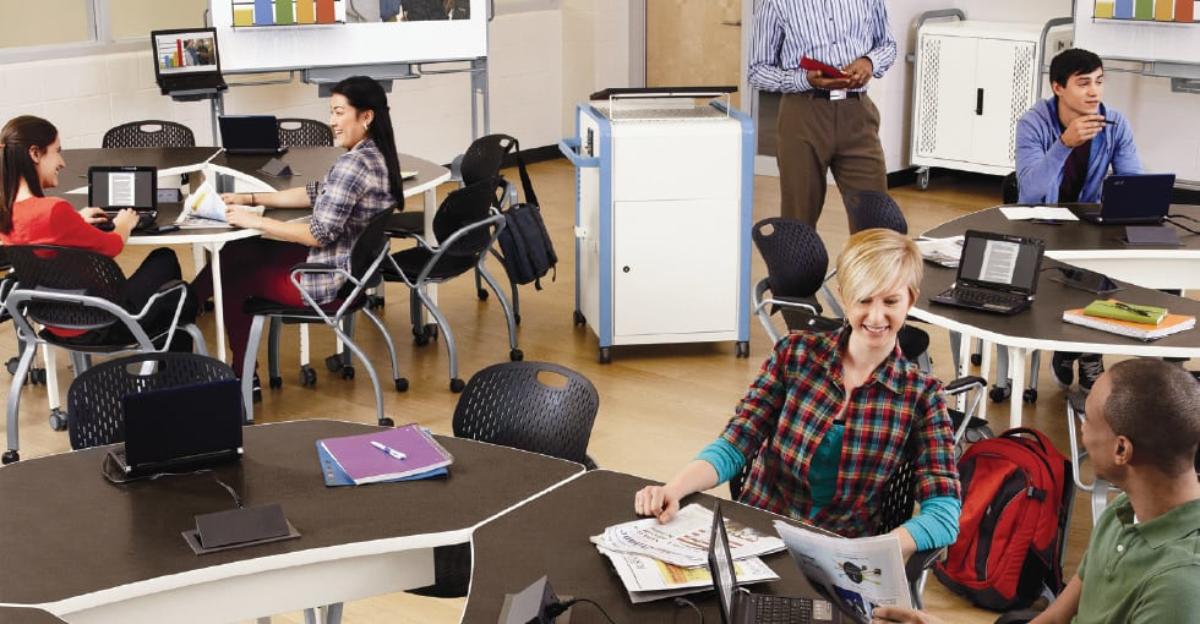Picture your favorite classroom from when you were in school. Did it help you work with other people or keep to yourself? Was the teacher able to work with everyone individually or stay up at the front of the room lecturing? Most importantly, was the work you accomplished in this room engaging or boring?
Chances are that your answers were always the first option.
The same is true of classrooms today. The difference is that collaboration is more important than ever. Think back to that favorite classroom. What was the furniture like? How accessible were the tools for learning? Was the layout flexible? Chances are, it looked a lot like this:
Desks
Aside from science labs, there are very few classrooms without desks. The difference is how those desks are used. In collaboration spaces, they are easily able to move around. The classroom never appeared the same way twice. They also come in shapes other than rectangles, so they can be fit together in more ways than just a box.
Chairs
In your favorite classroom, the seating was probably not attached to the desks. If it was, they were more comfortable seats that facilitated your movement. You might have even had chairs with cushioning available to you. Comfort is always a more preferable study condition. New materials and designs are making seating like this the norm in today’s collaborative classroom environments.
Tools
Yes, learning tools in the previous generation were limited to blackboards and overhead projectors, both of which were hard to move and share. The teacher in your favorite classroom probably didn’t use them much. In today’s classroom, technology can be easily shared and moved around the room to where it is most helpful for what is going on that day. This provides a more collaborative experience than just a teacher scratching away on a board.
More open
All of this movement is impossible without space. There needs to be enough for desks to be grouped together and students to work on the floor at the same time. You should be able to see across the entire room, but also have the ability to close sections off for quiet study time or teamwork. In some new schools, these classrooms look more like a coffee shop than a classroom. But if you think back, that’s probably what your favorite room looked like as well.
Collaboration is all about flexibility. Flexibility in design, yes, but also flexibility in ways of work. The teacher should have a variety of lesson variations at his or her disposal. The goal of the furniture and tools is to help make those variations happen.






Leave a Reply